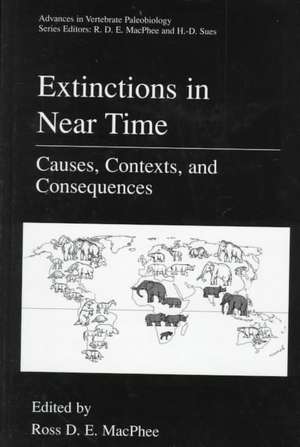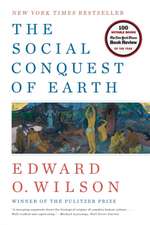Extinctions in Near Time: Causes, Contexts, and Consequences: Advances in Vertebrate Paleobiology, cartea 2
Editat de Ross D.E. MacPhee, Hans-Dieter Suesen Limba Engleză Hardback – 30 iun 1999
| Toate formatele și edițiile | Preț | Express |
|---|---|---|
| Paperback (1) | 1053.39 lei 39-44 zile | |
| Springer Us – 7 dec 2010 | 1053.39 lei 39-44 zile | |
| Hardback (1) | 1070.77 lei 39-44 zile | |
| Springer Us – 30 iun 1999 | 1070.77 lei 39-44 zile |
Preț: 1070.77 lei
Preț vechi: 1408.90 lei
-24% Nou
Puncte Express: 1606
Preț estimativ în valută:
204.89€ • 213.50$ • 169.65£
204.89€ • 213.50$ • 169.65£
Carte tipărită la comandă
Livrare economică 31 martie-05 aprilie
Preluare comenzi: 021 569.72.76
Specificații
ISBN-13: 9780306460920
ISBN-10: 0306460920
Pagini: 394
Ilustrații: XVII, 394 p. 16 illus., 2 illus. in color.
Dimensiuni: 170 x 250 x 30 mm
Greutate: 1 kg
Ediția:1999
Editura: Springer Us
Colecția Springer
Seria Advances in Vertebrate Paleobiology
Locul publicării:New York, NY, United States
ISBN-10: 0306460920
Pagini: 394
Ilustrații: XVII, 394 p. 16 illus., 2 illus. in color.
Dimensiuni: 170 x 250 x 30 mm
Greutate: 1 kg
Ediția:1999
Editura: Springer Us
Colecția Springer
Seria Advances in Vertebrate Paleobiology
Locul publicării:New York, NY, United States
Public țintă
ResearchCuprins
1 • Cretaceous Meteor Showers, the Human Ecological “Niche,” and the Sixth Extinction.- 2 • Prehistoric Extinctions on Islands and Continents.- 3 • The Interaction of Humans, Megaherbivores, and Habitats in the Late Pleistocene Extinction Event.- 4 • The Power of Pleistocene Hunter-Gatherers: Forward and Backward Searching for Evidence about Mammoth Extinction.- 5 • A Comparison of Methods for the Probabilistic Determination of Vertebrate Extinction Chronologies.- 6 • Putting North America’s End-Pleistocene Megafaunal Extinction in Context: Large-Scale Analyses of Spatial Patterns, Extinction Rates, and Size Distributions.- 7 • Rates, Patterns, and Processes of Landscape Transformation and Extinction in Madagascar.- 8 • Extinctions and Local Disappearances of Vertebrates in the Western Mediterranean Islands.- 9 • Introduced Predators and Avifaunal Extinction in New Zealand.- 10 • Late Quaternary Extinctions in Australasia: An Overview.- 11 • Late Pleistocene Megafaunal Extinctions: A European Perspective.- 12 • The Quiet Crisis: A Preliminary Listing of the Freshwater Fishes of the World that Are Extinct or “Missing in Action”.- 13 • Requiem Æternam: The Last Five Hundred Years of Mammalian Species Extinctions.- Systematic Index.- General Index.
Recenzii
`This book is a must-read if you have any curiosity, fascination, or professional interest in extinctions of the past or present. If you are among those concerned about our environment and the fact that we are losing more animal species each year, you should read this book.'
Discovering Archaeology, 1:5 (1999)
Discovering Archaeology, 1:5 (1999)













